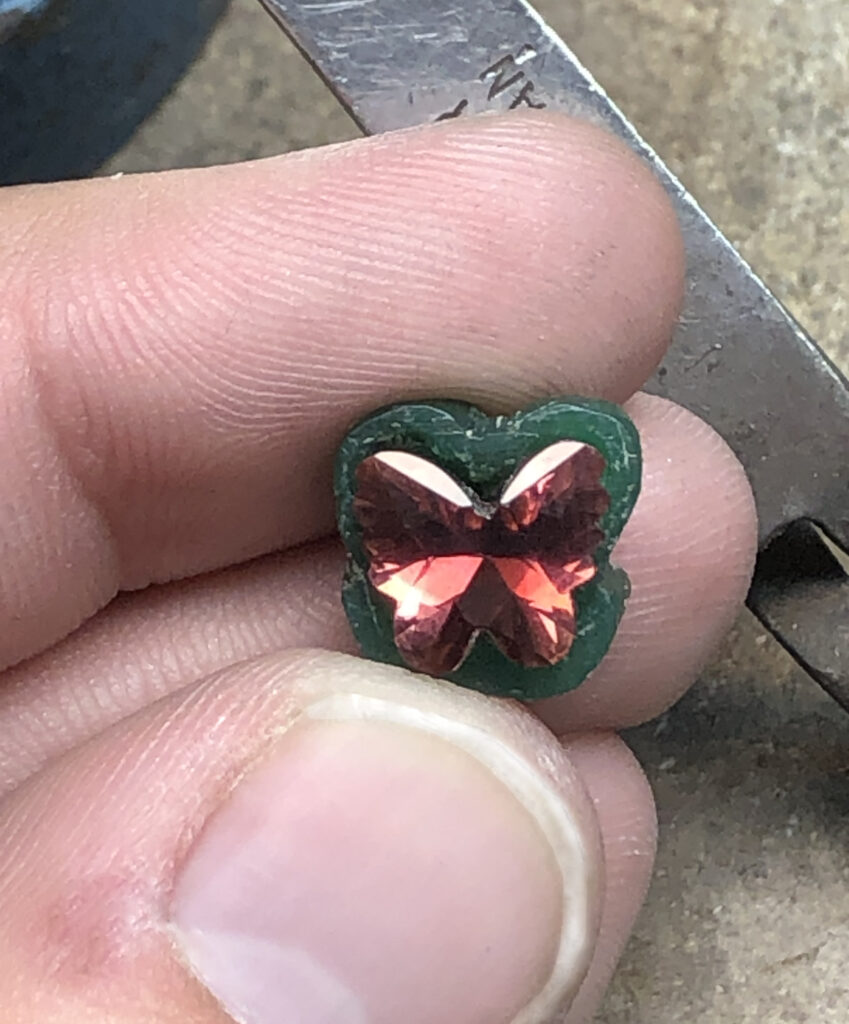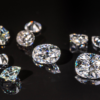Alluring Gem of Autumn & October’s Birthday – The Opal

Opal Pendant Earrings from Joslin’s Jewelry
Autumn is one of the best seasons to wear jewelry! Earthy, neutral fall outfits are best complemented with beautiful jeweled accessories, and few autumnal jewelry pieces can compete with the beauty of October’s birthstone: Opal.
Opals are treasured for their mesmerizing rainbow display of color, with flashes of fiery reds, deep blues, vibrant greens, and golden yellows dancing across a milky, translucent canvas, giving each stone a uniquely luminous, ever-changing glow.
The name is often attributed to the Greek word opallios, meaning “to see a change in color.” Other historians trace the name to the Romans and their Latin opalus, stemming from the Sanskrit upala meaning “precious stone.” Famous for their intriguing rainbow shimmer, Opals have even brought about the adjective opalescent, meaning “showing varying colors as an Opal does.” Think of the color of bubbles in the sunlight, for example!
This October birthstone is also a favorite gift on the 14th wedding anniversary!
Opal Formation
Opals are a natural gem formed from silica-rich solutions over thousands, sometimes even millions, of years. Rainwater first seeps into the ground, picking up silica along the way, and carries it down into cracks and cavities. Here, the water eventually evaporates and leaves behind tiny silica spheres that then settle into a grid-like pattern. Over time, these grid formations stack upon each other. As they do so, water and microscopic gaps are trapped between them. This is what creates the distinct play-of-color opals are known for.

Blue Opal Necklace and Earrings from Joslin’s Jewelry
Because of how opals are formed, they are a more delicate stone when compared to other popular gems. The higher water content and the brittle structure of opals make them especially prone to changes in temperature and humidity, as well as minor impacts. That’s why it is important to purchase opals from a trusted jeweler who can guide you on proper care and provide the right settings to protect these precious stones!
Distinctive, dominant colors in Opals are the result of the stone’s formation. Common, pearl-like Opals indicate small gas bubbles were present during formation, while yellows and reds show iron oxide inclusions. Some Opals appear black with blue, red, or green undertones; these colors are the result of organic carbon and magnesium oxides.
Opal History and Symbolism

Rough Opal Stone
Just like other gemstones, opals bore symbolic meaning and mysterious superstition around the world for different people. The stone’s ability to alter color intensity when affected by changing temperatures led many cultures to believe the stone was of good fortune.
Romans and Greeks attributed powers of love and hope to the stone, while Medieval Europeans considered opals to be lucky. This fortunate reputation changed during the Middle Ages.
Some attribute this change to the Bubonic plague. As the plague burdened European countries, killing 25% of the population, some decided the cause was opals. Because of the opal’s sensitivity to temperature, the colors would shine brilliantly on someone ill with a high fever, but upon the person’s death, the opal would become cold and pale.

Polished Opal Stone
Others say that opals continued to be good luck charms through the Middle Ages and didn’t become suspect until the early 1800s, when a fable spread about a magical princess with an enchanted opal. This stone was said to change appearance and alter its color according to her moods. However, according to the tale, the stone lost its magic when sprinkled with a few drops of holy water, and the enchanted princess died shortly thereafter.
In spite of these myths of suffering, many still held opals in high regard as mysterious and enchanting charms of fortune. To this day, October’s birthstone represents hope, confidence, and faithfulness.
Opal Sourcing

Round Opal Pendant Necklace from Joslin’s Jewelry
In the mid-1800s, opals became highly prized once more when multiple opal deposits were discovered in Australia. To this day, the country remains the world’s greatest source of the stones and is also known for its stunning black opals. As the natural Australian deposits are diminishing, however, the opal has gained value and increased in price.
Other Opal deposits can be found in Ethiopia, Mexico, Turkey, and Brazil. Opals have also been discovered in the Czech Republic, Canada, Madagascar, Indonesia, Peru, and in various Central American countries, such as Honduras, Nicaragua, and Guatemala.
Not all Opals today are natural ones, however. Gemologists and scientists found a way to synthetically create opal in the early 1970s. These synthetic opals are known as opalite and have a higher resistance to cracking and making them excellent gifts for people worried about damage from makeup, perfume, or hairspray.

Statement Opal Ring
Opal Durability and Care
Soft and sensitive to temperature change, the opal is a rather fragile stone. With a Moh’s hardness rating of 5 – 6.5, opals are quite delicate compared to many other popular gems. It’s important to keep your opals separate from other stones to prevent scratches. Your diamond, ruby, emerald, and sapphire pieces, for example, are quite a bit harder and will damage your Opals if stored together.
It is not recommended to use an ultrasonic jewelry cleaner on opal pieces, as the vibrations may crack this fragile gem. The best way to gently clean Opals is with warm, soapy water. But caution: excessive exposure to water can weaken the Opal pieces, and high heat or sudden temperature changes are almost certain to cause damage. For professional care and cleaning, just contact the jewelry experts at Joslin’s! Joslin’s team values your trust and will take care of your gems as if they were their own.
Birthstone Alternative: Pink Tourmaline


Tourmalines, like opals, offer several beautiful colors to choose from. When tourmaline crystals contain manganese, the stone becomes various shades of red and pink. These hues can also be created in laboratories through radiation.
Tourmaline is a remarkably vibrant gemstone. So much so that throughout history, they were often mistaken for other gems, such as emeralds or rubies. While opal is traditionally recognized as the birthstone of October, tourmaline – particularly in its pink hue – is celebrated as an alternate birthstone for the month. It is also associated with 8th wedding anniversaries.
Joslin’s recently acquired a rare, butterfly-shaped pink Tourmaline gem. Jewelry designer and Gary’s daughter, Elicia, was so inspired, she created a custom piece to highlight the shape and color of the stone. We’ll think you agree, it turned out beautifully! Stop by Joslin’s soon to check it out!
Searching for the perfect birthday present for your October-born loved one? Or perhaps you’re celebrating your 8th or 14th wedding anniversary soon. Even if you’re perusing for yourself, Joslin’s has something for everyone! Contact us online or drop by today and ask about our Opal or pink Tourmaline selections.







